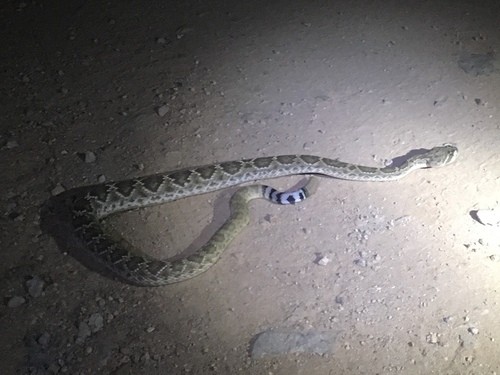Crotalus ruber lucasensis
A species of Rattlesnakes Scientific name : Crotalus ruber lucasensis Genus : Rattlesnakes
Crotalus ruber lucasensis, A species of Rattlesnakes
Scientific name: Crotalus ruber lucasensis
Genus: Rattlesnakes
Content
Description General Info
 Photo By hemispingus , used under CC-BY-NC-SA-4.0 /Cropped and compressed from original
Photo By hemispingus , used under CC-BY-NC-SA-4.0 /Cropped and compressed from original Description
Crotalus ruber lucasensis is an exemplary study in survival capabilities, exhibiting a unique adaptation to endure long periods with limited access to food, thanks to its metabolic efficiency. This species of pit viper, endemic to Baja California, also showcases fascinating predatory strategies, using its infrared sensing organs to locate prey in the region's harsh desert environment.
General Info
Lifespan
15-20 years
Diet
Crotalus ruber lucasensis primarily feeds on mammals, particularly rodents. It uses its venomous bite to immobilize the prey before consuming. The consumption of birds, lizards, and amphibians also supplements its diet.
Appearance
Crotalus ruber lucasensis is a medium-sized snake with a thick body and rough, scaly skin. It is usually reddish-brown with patches of pinkish or whitish color on its body, adding a striking contrast. This snake has a triangular head, hinged fangs, and a strong, sharp-ended tail. Its distinguishing feature is the heat-sensing pits located between the eyes and nostrils, enabling it to detect warm-blooded predators and prey.
Behavior
Crotalus ruber lucasensis displays nocturnal activity, hunting and feeding predominantly during the twilight and night hours. This solitary species is characterized by sit-and-wait predation strategy, often hiding camouflaged in its desert habitat to ambush prey. High levels of territorial aggression are observed, defending the immediate vicinity of their resting sites vehemently.
Scientific Classification
Phylum
Chordates Class
Reptiles Order
Lizards and snakes Family
Vipers Genus
Rattlesnakes Species
Crotalus ruber lucasensis